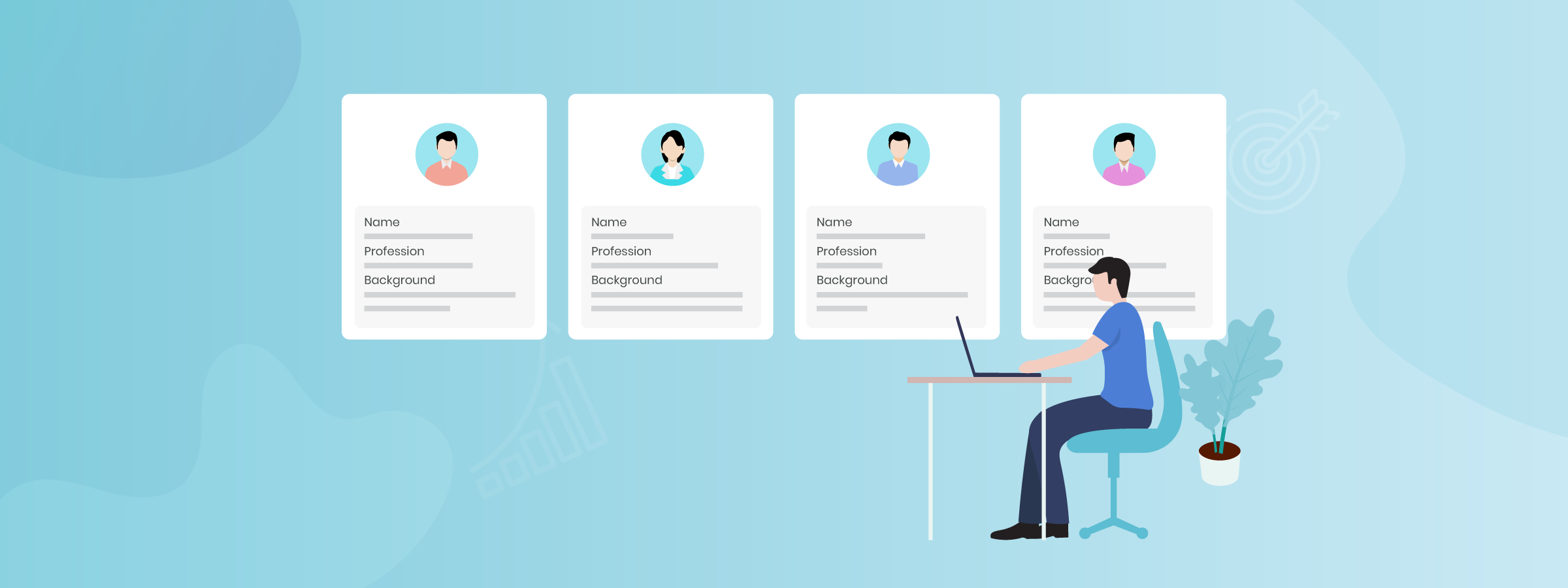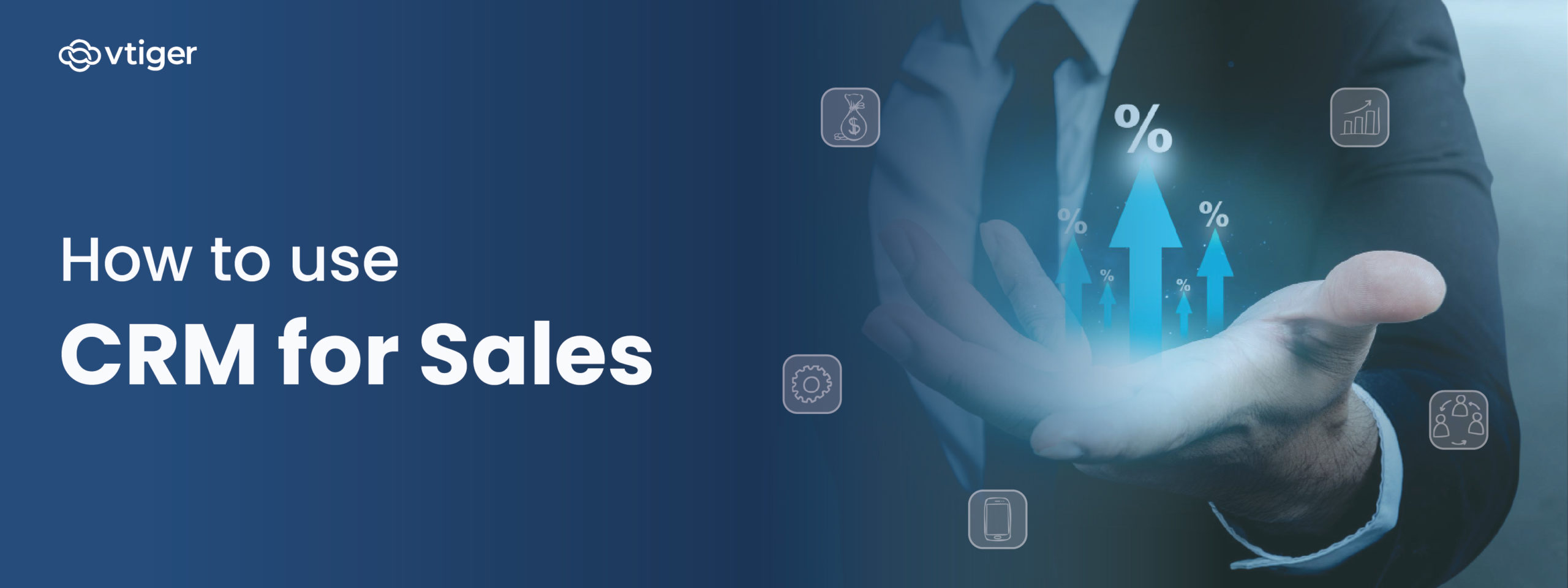For enterprises all over the world, finding the right customers to do business with has become more convenient than ever before. Since it is no longer sufficient to have a good product or a good marketing team to satisfy customers, you should consider creating buyer personas to deliver delightful experiences to your customers at every touchpoint for smarter selling.
What is a Buyer Persona?
A buyer persona is a descriptive profile of your target customer. The profile can consist of details representing your ideal buyer such as the customer’s age, gender, ethnicity, educational qualification, monthly income, hobbies, products they buy, job designation, employment history, marital information and so on.
Why have a buyer persona in the first place? Well, you don’t want to sell to someone who will not use nor enjoy your products and services. As the saying goes, no one size fits all.
Make sure the information you’re gathering is based on facts and not just your gut instincts. A well-crafted buyer persona should make customers flock to your store or website to pick up products or demand services they want instead of having to run around people that you wish would buy from you. A buyer persona can help you reach out to untapped markets and attract ideal customers from all walks of life.
Why is it Important to Identify Your Ideal Buyers?
A detailed buyer persona will help you assess what your customers are thinking, what they are feeling, what are their concerns, what are they expecting from your product and how are they planning to use your products. With these insights, you can carefully manage your marketing campaigns to churn out better results rather than shooting in the dark.
Creating a buyer persona helps you get better insights into a buyer’s behaviour and in turn, lets you influence their buying habits. With this information, you’ll be able to track every step of the buyer before they make a purchase decision. With a buyer persona clearly defined, you can enable your sales and marketing teams to go after a specific set of targeted audiences that will have a higher chance to convert into customers.
Buyer personas help you create content that is relatable to your target audience. Not just from a marketing standpoint but also from the sales perspective, you’ll be sure that you’re talking to interested customers who will not only own your products but also endorse them as their own.
Depending on the persona of your buyer, you can draft more personalized messages to your target group. For instance, if you’re trying to sell candy to kids, you might hand them a leaflet that says “Turn that frown upside down with a fun pack of _ candies”. While on the other hand, if you’re selling candy to a working mother, you might send them an email that says “Make your children’s day more special with fun size packs of _ candies”.
How do You Create a Buyer Persona?
Starting your quest for buyer personas with a fixed number isn’t very thoughtful. While having a 4-5 buyer personas is a good ballpark figure, it isn’t suitable for every product out there under the Sun. Take the time and effort to create a handful of buyer personas to keep the sales process simple and repeatable to ensure the growth of your company. A small set of buyer personas will also keep the messaging crystal clear for any demographic that you cater to.
If you own a “For Pets only” grocery store, an example of a buyer persona would be “Lawrence the Animal Lover”. Hypothetically, Lawrence would be a 27 year old man who has a dog, a ferret and a possum. He goes to work at a renowned educational institution as a full-time professor on particle physics. He visits the “For Pets only” grocery store twice a month and spends close to $350 on food items and other playthings for his pets. His hobbies would include taking part in science fairs and maker fairs around town and helping children with their homework.
You can begin by talking to existing customers who find your products and services useful and would be happy to recommend it to other customers. You can have candid interviews with customers you’ve built a strong relationship with.
Questions to Ask Customers to Identify Buyer Personas
- What is your age?
- Where are you from?
- What is your gender?
- Are you married?
- Do you have children?
- What is your educational qualification?
- Which company do you work for?
- What industry does your company fall under?
- What is the size of your company?
- What is your role and responsibilities at your company?
- What are your goals at your company?
- Can you describe the sales process at your company?
- How do you measure your success?
- What are the skills you need to do a good job?
- Who do you report to? And who reports to you?
- What is the yearly turnover of your company?
- How did you hear about our products and services?
- How often do you use our products and services?
- What are the biggest challenges you face?
- Do our products and services resolve your challenges?
- Would you recommend our product and services to others?
- What are the reasons for recommending our products and services?
- How do you spend most of your time at work?
- What do you do for fun?
Before you begin your research on buyer personas, set clear goals for the end result. What is it that you want to know about your customers? Where is the data or the control group of your research going to come from? Are the people you are interviewing relevant to your brand or business? How are you going to use these buyer personas to improve your marketing campaigns? How is your sales team going to leverage the data from these buyer personas?
Creating a Negative Buyer Persona
A buyer persona is a great way of attracting the right customers to your storefront. While creating a buyer persona helps you bring in more business, creating a negative buyer persona is equally important because it informs your sales team about the kind of customers you don’t want to go after. You might encounter curious chatter-boxes who want to enquire every last detail about your product and even probe into its return policies. Yet they will leave your store without purchasing a single product off the shelf.
The easiest example of a negative buyer persona is Petless Pete. If you own a “For Pets only” grocery store, Petless Pete would be that customer who’s never had a pet before but has thought about it countless times. When someone like Petless Pete walks into you store, you’re first question would be “Do you have a pet?”. Pete might reply saying “No, I don’t but I’m thinking about getting a dog soon.”. Since Pete isn’t sure about when he wants to own a pet yet, you’re not going to make a sale by convincing him that abc brand is the finest when it comes to doggo’s diet. You would much rather focus your time and effort going after folks with three dogs in their homes than helping Pete make up his mind about owning his first pet.
Having a negative buyer persona reduces the loses your company incurs and increases the overall quality of your customers. For ideal customers, it’ll shorten the sales cycles while preventing you from wasting time on indecisive window-shoppers.
Marketing Collaterals You Can Frame Around Buyer Personas
- Email campaigns
- Blog topics
- Social media promotions
- Giveaways
- Website landing pages
- Exclusive offers and discounts
- Podcasts and webinars
Having a cutout of your buyer personas in front of your work desk can help your sales team focus on key characteristics that will appeal to your prospects and enable them to sell smarter.
So what are you waiting for? Download this free buyer persona template and reach your sales quota in no time!




